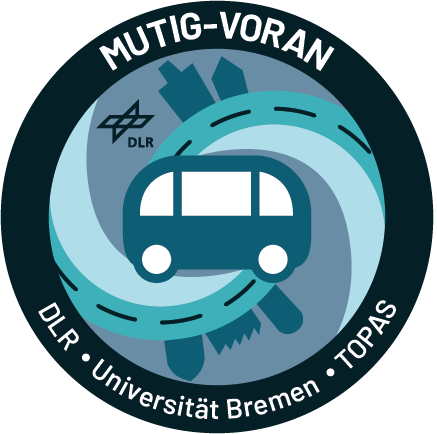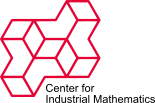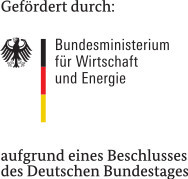MUTIG-VORAN - Multiple transport processes in Galileo-based traffic scenarios using optimisation methods for real applications
| Working Group: | WG Optimization and Optimal Control |
| Leadership: |
Prof. Dr. Christof Büskens ((0421) 218-63861, E-Mail: bueskens@math.uni-bremen.de )
Dr. Margareta Runge |
| Processor: |
Dr. Kai Wah Chan (E-Mail: kai.wah.chan@topas.tech)
Xibo Li ((0421) 218-63874, E-Mail: lixibo@uni-bremen.de) Jan Phan ((0421) 218-63866, E-Mail: gienapp@uni-bremen.de) |
| Funding: | Bundesministerium für Wirtschaft und Energie |
| Project partner: |
AG Kognitive Neuroinformatik, Universität Bremen Arbeitsbereich Nachrichtentechnik, Uni Bremen TOPAS Industriemathematik Innovation gGmbH |
| Time period: | 01.01.2022 - 30.06.2025 |
 The aim of the project is to automate recurring journeys in known and geographically limited areas and, in particular, to develop transferable algorithms for autonomous driving.
To this end, the cooperation partners are researching and developing new solutions with cloud connectivity, which will be tested experimentally in several test areas.
The aim of the project is to automate recurring journeys in known and geographically limited areas and, in particular, to develop transferable algorithms for autonomous driving.
To this end, the cooperation partners are researching and developing new solutions with cloud connectivity, which will be tested experimentally in several test areas. The overarching goals of the project, which will be implemented with real vehicles in particular, are:
- Development of efficient AI algorithms (including trajectory optimisation, deep learning, model predictive control, sensor fusion) for highly automated driving.
- Use of mobile communication paths (5G, satellite) for resilient and efficient algorithms.
- Development of predictive algorithms for situation assessment and safeguarding needs.
- Development of V2X and remote control for safe and connected road traffic and edge cloud computing for AI algorithms of highly automated driving.
Publications
- X. Li, S. Patel, C. Büskens.
Let Hybrid A* Path Planner Obey Traffic Rules: A Deep Reinforcement Learning-Based Planning Framework.
, 11th International Conference on Automation, Robotics, and Applications (ICARA) , IEEE, 2025.


